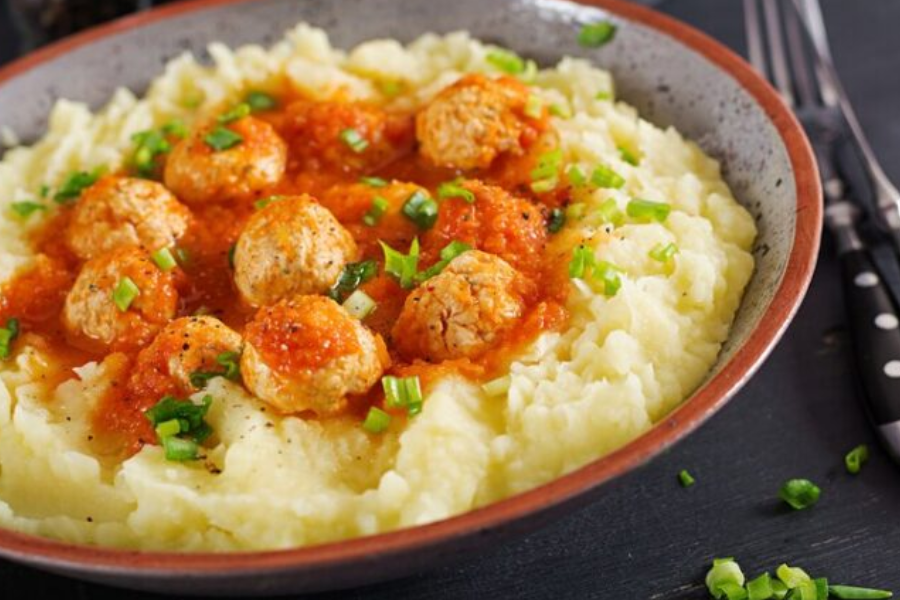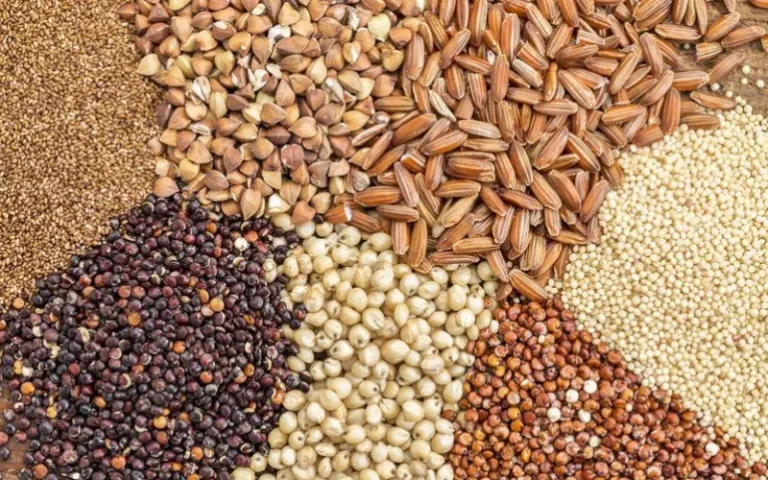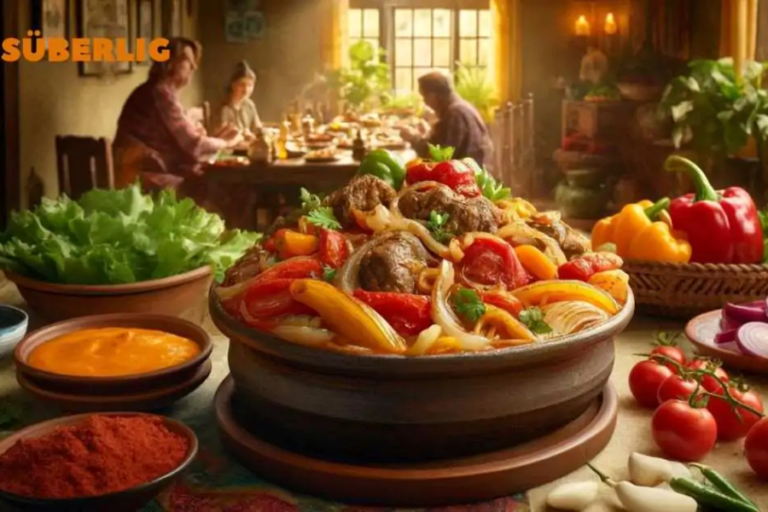Exploring Cuşcuş: The Culinary Gem of North African Cuisine
Cuşcuş, a cherished staple in Middle Eastern and Mediterranean cuisines, is much more than just a simple grain dish. Known for its light, fluffy texture and mild nutty flavor, Cuşcuş is a versatile and nutrient-dense food made from durum wheat semolina. Its ability to complement a diverse array of flavors has made it a beloved ingredient worldwide. Though its roots lie in North Africa, Cuşcuş has traveled far beyond its origins, becoming a favorite in many culinary traditions.
Discovering Cuşcuş: The Heart of North African Cuisine

Cuşcuş, often spelled as “couscous” in English, holds a prominent place in the culinary heritage of North Africa. Originating in the Berber regions of Morocco, Algeria, and Tunisia, Cuşcuş has been a dietary cornerstone for centuries. This dish, celebrated for its ease of preparation and versatility, is made from steamed durum wheat semolina. Its unique texture, both light and slightly chewy, allows it to absorb flavors and spices, making it an ideal base for a wide range of dishes.
Unlike rice or other grains, Cuşcuş is a type of pasta. Its production involves rolling, moistening, and steaming semolina to create tiny, delicate granules. This process is what gives Cuşcuş its distinctive texture and culinary flexibility.
The Versatility of Cuşcuş: More Than Just a Grain
While Cuşcuş may resemble rice or small pasta pearls, it occupies a unique place in the world of grains and starches. In Moroccan cuisine, for example, Cuşcuş is often the star of the meal rather than just a side dish. It is commonly served with slow-cooked meats, vegetables, and aromatic broths in dishes such as couscous tfaya (with caramelized onions and raisins) or couscous bidaoui (a version from Casablanca).
Cuşcuş’s ability to meld with various spices, herbs, and flavors makes it an ideal canvas for culinary creativity. Whether it’s paired with savory stews, tossed in salads, or even used in sweet dishes, Cuşcuş adapts effortlessly to diverse culinary contexts, proving its versatility time and time again.
Cuşcuş: Not a Sweet Dish or Rice, But a Unique Pasta
There is often confusion about what Cuşcuş truly is. Some mistake it for rice due to its appearance, while others may think it’s a sweet dish because of its delicate texture. However, Cuşcuş is neither. It is a form of pasta made from durum wheat semolina that has been processed into small granules.
The preparation process for Cuşcuş is distinctive: the semolina is sprinkled with water and rolled into fine particles, which are then steamed. This method gives Cuşcuş its fluffy yet slightly chewy texture, allowing it to complement a wide variety of dishes, from rich Moroccan tagines to light Mediterranean salads.
The Health Benefits of Cuşcuş: A Nutritional Powerhouse
Cuşcuş is not just versatile in the kitchen; it’s also packed with nutritional benefits. As a source of complex carbohydrates, Cuşcuş provides sustained energy, making it an excellent choice for those leading active lifestyles. Unlike simple carbohydrates that cause rapid spikes in blood sugar levels, the complex carbs in Cuşcuş release energy slowly, keeping you fuller for longer and helping to stabilize blood sugar levels.
Moreover, Cuşcuş is low in fat and cholesterol-free, making it a heart-healthy option. It’s also a good source of plant-based protein, which is essential for muscle repair and growth, especially for those following vegetarian or vegan diets. In addition to these macronutrients, Cuşcuş is rich in dietary fiber, which supports digestive health by promoting regular bowel movements and preventing constipation.
Cuşcuş also provides a range of essential vitamins and minerals. It’s a good source of B vitamins, including thiamine, riboflavin, and niacin, which are crucial for energy metabolism and nervous system function. Additionally, Cuşcuş contains iron, vital for oxygen transport in the blood, and magnesium, which plays a role in muscle and nerve function, bone health, and blood pressure regulation.
Cuşcuş for All Ages and Dietary Preferences
One of the most appealing aspects of Cuşcuş is its suitability for a wide range of dietary needs and preferences. Whether you’re a vegetarian, vegan, or meat-eater, Cuşcuş can easily be incorporated into your diet. It serves as a nutritious alternative to other grains and pasta, offering a unique texture and flavor profile that enhances culinary diversity.
For children, Cuşcuş is an excellent food choice due to its mild flavor and soft texture. It’s easy to chew and digest, making it a kid-friendly option that can be served plain or mixed with vegetables, proteins, and mild spices. Introducing Cuşcuş early in a child’s diet can help them develop a taste for diverse flavors and textures while providing essential nutrients for growth and development.
Elderly individuals can also benefit from Cuşcuş’s gentle texture and digestibility. It’s easy to prepare in a way that suits the dietary needs and preferences of older adults, whether it’s served soft with a stew or as part of a light salad. Cuşcuş’s nutritional profile, which includes dietary fiber, B vitamins, and magnesium, supports overall health and well-being in seniors, making it a valuable addition to their diet.
Preparing Cuşcuş: A Step-by-Step Guide
While Cuşcuş is traditionally steamed in a special pot called a couscoussier, modern methods make it much easier to prepare at home with basic kitchen tools. Here’s a step-by-step guide to making perfect Cuşcuş:
1. Measure and Prepare Ingredients
Start by measuring the amount of Cuşcuş you need, typically using a 1:1.25 ratio of Cuşcuş to liquid (water or broth). For added flavor, you can toast the Cuşcuş in a dry skillet over medium heat for a few minutes, stirring constantly until it turns slightly golden. Toasting enhances the nutty flavor of Cuşcuş and gives it a deeper taste.
2. Cooking the Cuşcuş
In a saucepan, bring water or broth to a boil. You can add a pinch of salt or a drizzle of olive oil for extra flavor. Once the liquid reaches a boil, remove it from heat and stir in the Cuşcuş. Cover the saucepan with a lid and let it sit for about 10 minutes, allowing the Cuşcuş to absorb the liquid and steam gently. This method ensures that the Cuşcuş remains light and fluffy.
3. Fluffing and Serving
After the Cuşcuş has absorbed all the liquid, uncover the saucepan and let it sit for a few minutes to cool slightly. Then, fluff the Cuşcuş with a fork to separate the grains and create a light, airy texture. At this point, the Cuşcuş is ready to be served. You can enjoy it as a side dish, a base for main courses, or as part of a salad.
Creative Variations and Serving Suggestions
Cuşcuş is incredibly versatile and can be customized in countless ways to suit different culinary styles and preferences. Here are some creative ideas for enhancing your Cuşcuş dishes:
Flavor Boosters
Cook Cuşcuş in broth instead of water to add depth of flavor. You can also sauté onions, garlic, or spices like cumin, paprika, and cinnamon before adding the liquid, infusing the Cuşcuş with rich, aromatic notes.
Vegetable Additions
Mix in sautéed or roasted vegetables such as bell peppers, zucchini, carrots, and cherry tomatoes. This not only adds color and texture but also boosts the nutritional value of the dish.
Protein Enhancements
For a more filling meal, add cooked chicken, lamb, shrimp, or chickpeas to the Cuşcuş. The protein complements the grain’s texture and makes it a well-rounded dish.
Herb Garnishes
Fresh herbs like parsley, mint, and cilantro can be stirred into Cuşcuş just before serving, adding a burst of freshness and flavor.
Zesty Finishes
A squeeze of lemon juice or a drizzle of olive oil can brighten up the flavors of Cuşcuş and add a touch of acidity that balances the richness of other ingredients.
Cuşcuş at Parties and Gatherings: A Crowd-Pleaser
Cuşcuş is an excellent choice for entertaining guests, whether at a casual family gathering or a festive celebration. Its ability to pair well with a variety of dishes makes it a versatile addition to any party menu. You can serve Cuşcuş as a hot side dish alongside grilled meats, roasted vegetables, and rich sauces, or as a cold salad mixed with fresh vegetables, nuts, and a light vinaigrette.
For larger gatherings, consider setting up a Cuşcuş bar where guests can customize their own bowls with a variety of toppings and sauces. This interactive dining experience is not only fun but also allows guests to tailor their meals to their tastes and dietary preferences.
Budget-Friendly and Accessible Ingredients
Cuşcuş is not only easy to prepare but also budget-friendly, making it an economical choice for home cooks. The main ingredient, durum wheat semolina, is affordable and widely available in grocery stores and online. Cuşcuş can be made with basic pantry staples like water, salt, and olive oil, ensuring that even the most cost-conscious cook can enjoy this nutritious dish.
To make Cuşcuş even more economical, consider incorporating seasonal vegetables and herbs, which are often less expensive and more flavorful when in season. By shopping smartly and using what’s available locally, you can create delicious Cuşcuş dishes without breaking the bank.
Storing and Reusing Leftover Cuşcuş
Cuşcuş can be prepared in advance and stored in the refrigerator for several days, making it a convenient option for meal planning. To reheat Cuşcuş, simply add a splash of water or broth and warm it gently on the stovetop or in the microwave, fluffing with a fork to restore its texture.
Leftover Cuşcuş can be transformed into new dishes, reducing food waste and keeping your meals interesting. Here are a few ideas:
Breakfast Porridge
Mix leftover Cuşcuş with warm milk, honey, and dried fruits for a nourishing breakfast porridge.
Stuffed Vegetables
Use Cuşcuş as a filling for stuffed peppers, tomatoes, or zucchini, combining it with herbs, cheese, and chopped nuts.
Cuşcuş Cakes
Form leftover Cuşcuş into patties, mix with eggs and breadcrumbs, and fry until golden for a tasty snack or side dish.
Soups and Stews
Stir leftover Cuşcuş into soups and stews to add body and texture, turning a simple broth into a hearty meal.
Gluten-Free Alternatives to Cuşcuş
While traditional Cuşcuş is made from durum wheat semolina and therefore contains gluten, there are several gluten-free alternatives available for those with celiac disease or gluten sensitivity. These alternatives mimic the texture and cooking method of Cuşcuş but are made from different grains:
Quinoa
Quinoa is a gluten-free grain that cooks up light and fluffy, similar to Cuşcuş. It’s also high in protein and contains all nine essential amino acids, making it a complete protein source.
Millet
Millet is another gluten-free grain that can be used in place of Cuşcuş. It has a mild flavor and a slightly chewy texture, making it a good substitute in both savory and sweet dishes.
Cornmeal (Polenta)
For a more robust and hearty alternative, consider using polenta or finely ground cornmeal. While the texture is slightly different, it provides a similar base for stews and sauces.
Conclusion: The Timeless Appeal of Cuşcuş
Cuşcuş is more than just a dish; it’s a cultural icon, a symbol of hospitality, and a beloved staple in many households around the world. Its ability to adapt to various flavors, ingredients, and dietary needs has ensured its place in kitchens far beyond its North African origins.
Whether you’re cooking for a large family, preparing a quick weeknight meal, or exploring new culinary horizons, Cuşcuş offers endless possibilities. Its nutritional benefits, ease of preparation, and versatility make it a dish that deserves a spot in your regular rotation.
By experimenting with different ingredients and techniques, you can create your own unique versions of Cuşcuş, bringing a taste of tradition and creativity to your table. Whether served as a simple side or a show-stopping main course, Cuşcuş is a dish that continues to inspire and delight, proving that sometimes, the simplest ingredients can create the most memorable meals.
Keep an eye for more news & updates on American Breaking!





